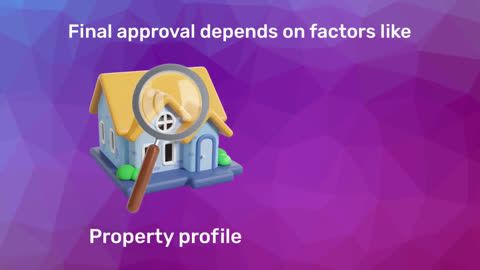Whether you are a first-time home buyer or an existing borrower looking to transfer your home loan or take a top-up loan, understanding the reducing balance method can help you make informed financial decisions.
What is the reducing balance method?
The reducing balance method, also known as the diminishing balance method, is an interest calculation technique where interest is charged on the outstanding loan balance after each EMI payment. This means that as you repay your loan, the amount on which interest is calculated decreases over time.Unlike the flat rate method, where the interest is calculated on the entire loan amount throughout the tenure, the reducing balance method ensures that you only pay interest on the unpaid loan balance, resulting in lower interest payments as the loan progresses.
How the reducing balance method works
In the reducing balance method, every EMI consists of two components—interest and principal repayment. In the initial years of your loan, a larger portion of your EMI goes toward interest, while a smaller portion is applied to the principal. As the loan tenure progresses, the principal component of your EMI increases, and the interest component decreases. This gradual reduction in the loan principal means that the interest charged in the subsequent months also reduces.Let us break it down with an example:
- Suppose you take a home loan of Rs. 50 lakh at an interest rate of 8.50% per annum for a tenure of 20 years.
- In the first month, interest will be calculated on the full Rs. 50 lakh.
- After your first EMI payment, the outstanding loan amount decreases, and interest for the second month is calculated on this reduced balance.
- As you continue to pay EMIs, the loan principal keeps reducing, lowering your interest charges over time.
Benefits of the reducing balance method
- Lower interest over time: Since the interest is calculated only on the outstanding principal, you benefit from paying less interest as your loan progresses.
- Transparency: The reducing balance method provides greater transparency in terms of interest calculation, allowing borrowers to understand exactly how their payments are applied.
- Savings on long-term loans: For long-term loans like home loans, the reducing balance method ensures that you do not pay excessive interest, making it a more economical choice for borrowers.
- Flexibility with prepayments: If you make part-prepayments during the loan tenure, the outstanding principal reduces faster, further lowering your interest payments in subsequent EMIs.
How the reducing balance method impacts your home loan
For borrowers, the reducing balance method offers a clearer view of how their repayments affect the loan balance. Here is how it impacts key aspects of your home loan:- EMI breakdown: In the early years of your home loan, a larger part of your EMI goes toward interest. As the loan progresses, more of the EMI is allocated toward reducing the principal.
- Interest burden: By reducing the loan balance progressively, you are paying less interest over the entire loan tenure compared to other interest calculation methods.
- Faster principal repayment: This method allows for quicker repayment of the loan principal, especially if you opt for a shorter loan tenure or make prepayments.
Reducing balance method vs. flat rate method
Let us compare the reducing balance method with the flat rate method:| Reducing balance method | Flat rate method |
| Interest calculated on outstanding loan balance | Interest is calculated on the entire loan amount, regardless of repayments |
| Results in lower total interest | Results in higher total interest |
| More transparent and beneficial for long-term loans | Less transparent, often leading to higher repayment amounts |
| Higher EMI in the initial years, lower later | EMI remains consistent throughout the loan tenure |
Top-up loans and balance transfers with the reducing balance method
If you already have a home loan, you might be interested in top-up loans or balance transfers. The reducing balance method also plays a significant role in the process of balance transfer of home loan.- Top-up loans: If you need additional funds during the tenure of your home loan, you can take a top-up loan. Since your original loan is reducing in balance, the interest on your top-up loan will also follow the reducing balance method, making it a cost-effective way to borrow more.
- Balance transfer: If you are unhappy with the interest rates or services from your current lender, you can opt for a home loan balance transfer. Many borrowers transfer their home loans to lenders offering lower interest rates calculated on the reducing balance method, reducing their overall interest burden.
How to maximise savings with the reducing balance method
- Make prepayments: If you make additional payments toward your principal, the outstanding loan balance reduces faster, cutting down the interest in future EMIs.
- Opt for shorter tenures: A shorter loan tenure means quicker repayment of the principal, which reduces the total interest paid over time.
- Maintain a high credit score: Borrowers with higher credit scores can often negotiate better interest rates, especially with lenders using the reducing balance method.
- Balance transfers: Consider transferring your loan to a lender offering a lower interest rate under the reducing balance method to save on interest costs.
If you are looking for a home loan or considering transferring your current loan for better terms, Bajaj Housing Finance offers competitive home loan options. With fast approval, low interest rates, flexible repayment terms, and top-up loan facilities, Bajaj Housing Finance can help you achieve your dream of owning a home without the burden of high interest rates.




